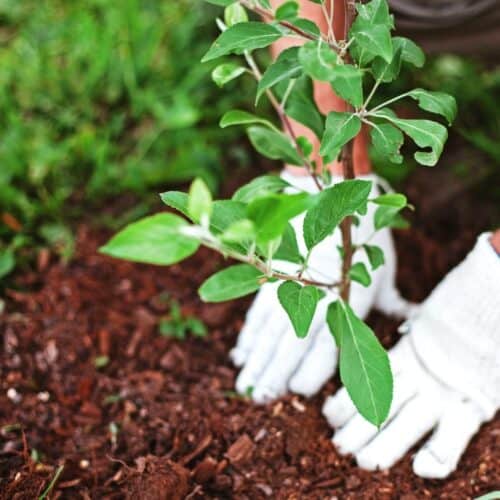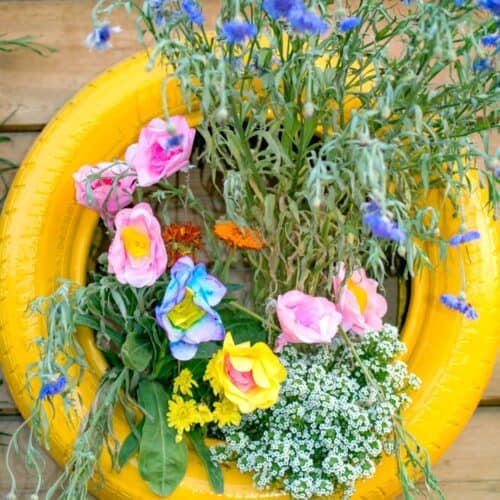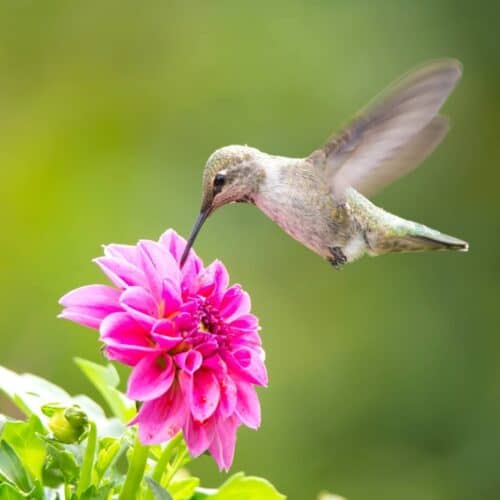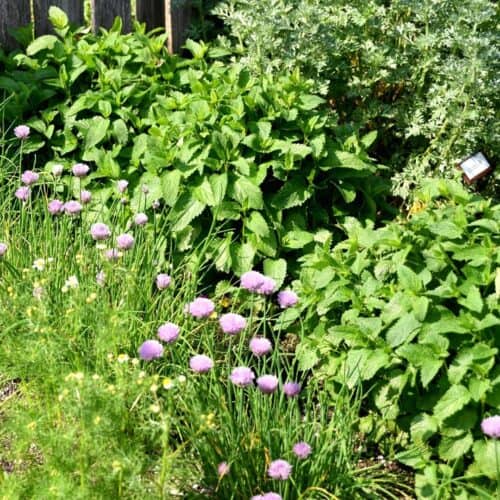How to make a Garden for Kids is a great way to help children learn about plants, nature, and the environment.
Not only is gardening with children a fun way to spend time together, it can also promote healthy eating habits by growing fruits and vegetables.
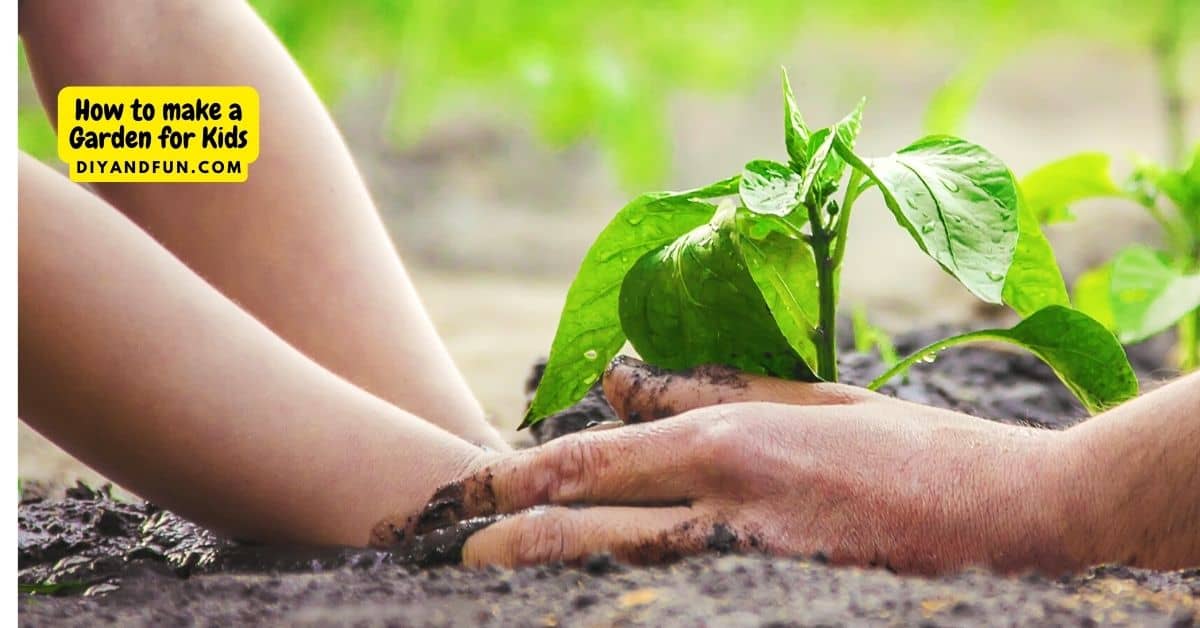
Making a Garden for Kids is a rewarding activity.
We already know how gardening can benefit adults in many ways.
However, children can also learn a range of life-long skills such how to care for plants.
Did you read about How to start a flower garden for beginners ?
That article is full of tips and tricks to get your flower garden growing.
Perennial flowers can easily go into your flower garden along with the annuals.
A garden kit comes with essentials that you can use to begin gardening. You can find a selection of garden kits here.
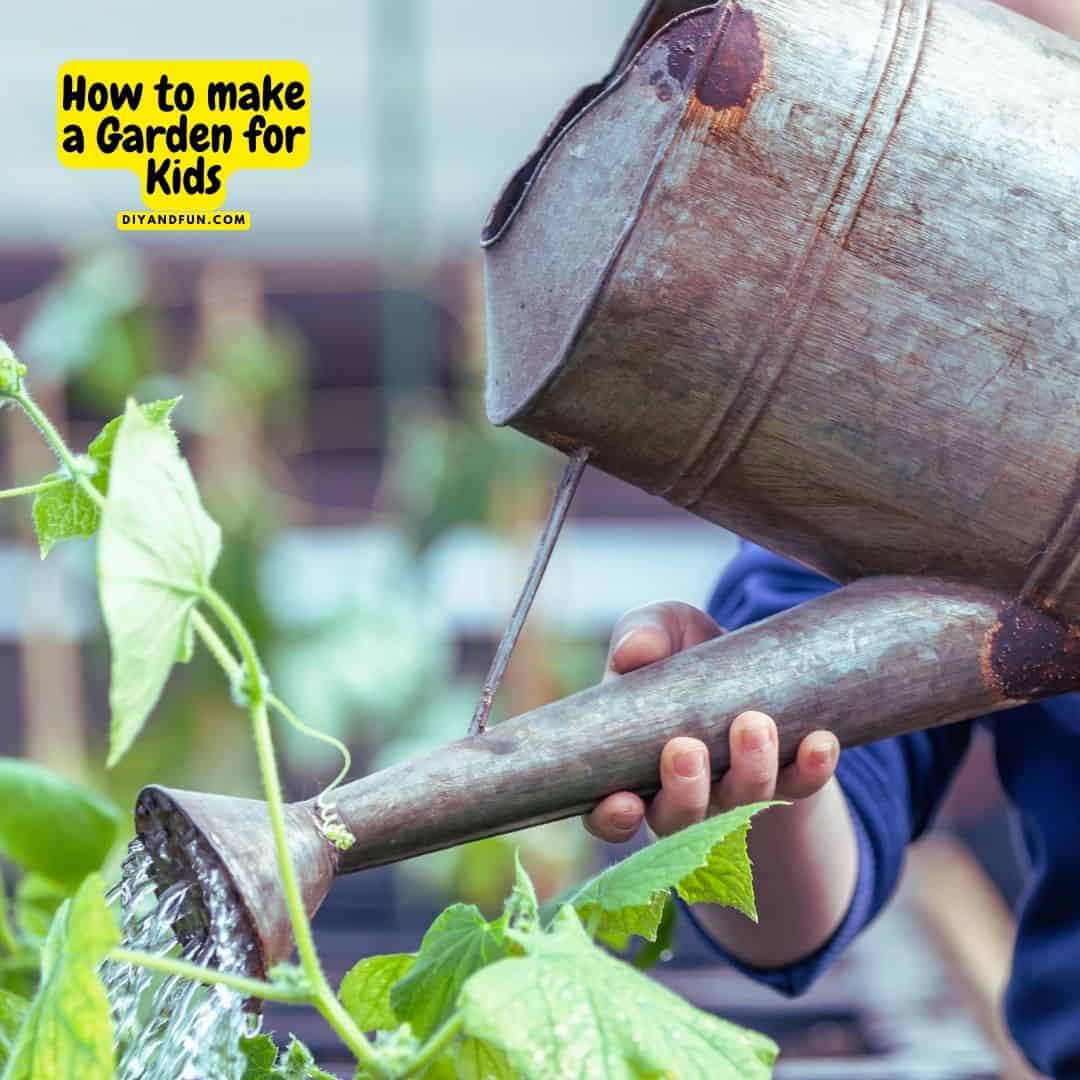
Tips for gardening with children.
Involve children in the planning and implementation of the garden is important for the success of the garden. You can use the gardening idea as an opportunity to teach kids about nature and the environment. However, it is also important that you take into consideration the ages and abilities of the children with the tasks that they will be involved with.
More tips for you.
- Before you start digging, read below about how to find a perfect location for your garden.
- Plan the garden in advance with the children can help save you time and money in the end.
- Involve children with selecting plants.
- Work with the children in properly preparing the soil for your garden is an important step.
- Help the children plant the plants .
- Work with children in taking care of the garden.
- Review this listing of easy plants for kids that are easy to care for.
How to select a location for a children's garden.
When selecting a location for your garden, for best results, choose a location that has the best chance of getting the ideal amount of natural sunlight needed and that is easily accessible for children. Soil and drainage are also important but, can be somewhat altered to your needs.
Here is what else you should keep in mind when selecting a location for your kids garden.
- While most plants need at least five to six hours of direct sunlight per day, there are some varieties that are okay with partial sunlight (astilbe, hostas, geraniums (geraniums are both annual and perennial).
- Drainage is important as you do not want your plants to be under water. You can make your gardening life easier when it rains a lot if you select a location that has its own natural drainage.
- Before you start digging, notify your local utilities or local folks who need to know about digging. In many locations they will need to come out and mark the area so you do not dig up something vital...like your cables.
- Testing the PH of your soil will give you a 'heads up' on needs such as fertilizers.
How to plan a garden for children.
Involving children in the planning process will help them keep the interest. Work with them in selecting vegetables, flowers, or herbs for the garden.
Plan Your Layout by Sketching It Out
- Start your sketch by adding the things that are permanent such as driveways, walkways, or fences.
- Decide what you will plant as this is an important factor in the layout of the garden.
- Generally speaking, the taller plants should go behind the other plants as they can create shade. This means, the smaller flowering plants should go in front while the taller ones should go in back.
- Consider using potted plants with plants in the ground or perennials with annuals.
- Creating raised beds or using containers can also make the garden more accessible for children.
- Plan for non-living garden items such as rocks or statues that kids can make or select.

How to prepare the soil for a kids garden.
Sometimes soil can be a huge factor in the success of a plant. This is because the soil may the hard, have a lot of unknown materials, sand or clay in it, or simply be hard to work with.
Prepare the Garden Soil for Planting
- Some kids may do better when using child-sized garden tools.
- Kids can help to clear the area of any weeds or debris and loosen the soil.
- Help children loosen up the soil by tilling or turning it.
- Kids can also help to in organic matter or compost to give your plants a head start.
By taking the time to properly prepare the soil, you can provide your plants the best chance for success and ensure that they will continue to bloom throughout the growing season and seasons to come.
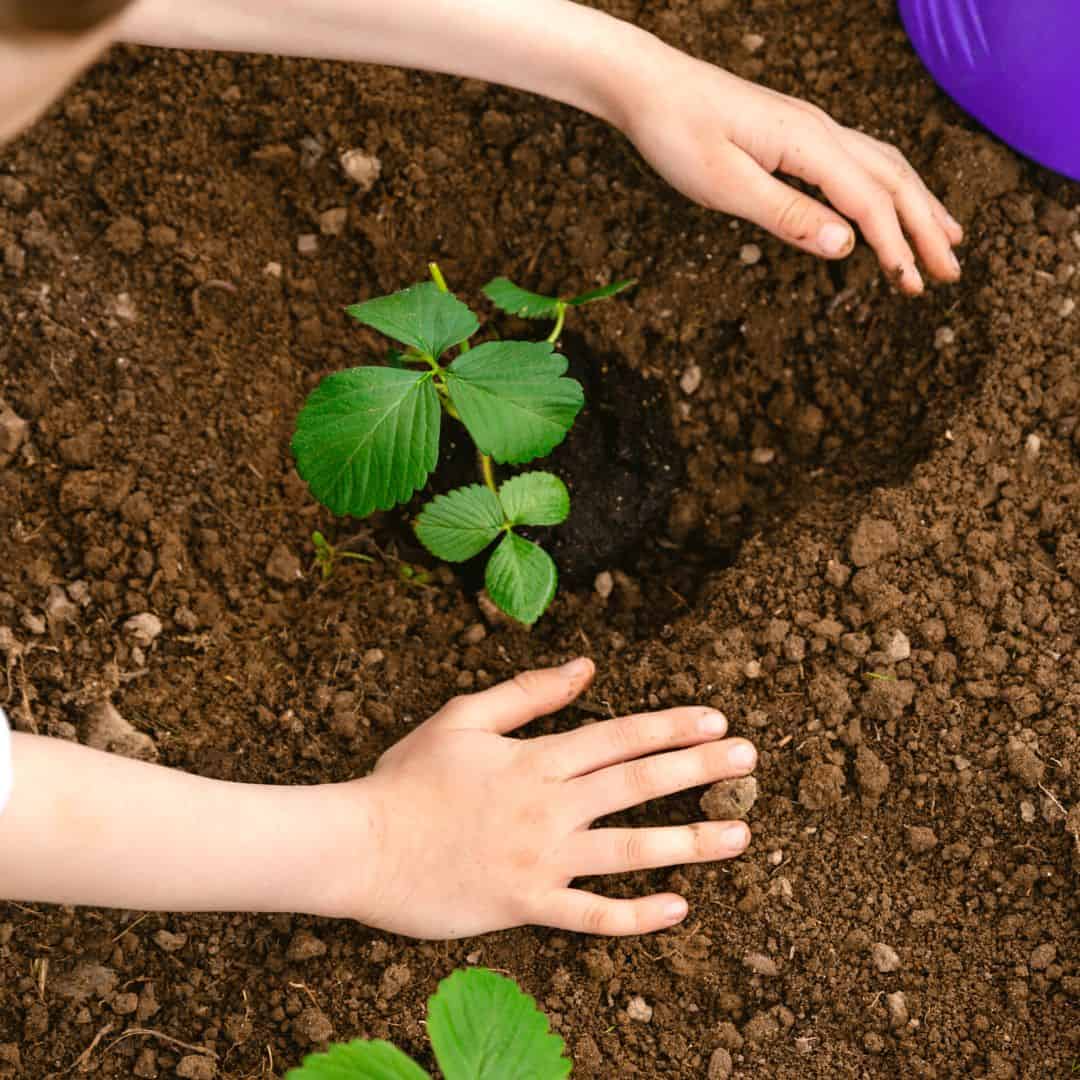
How to plant a child's garden.
You have done your research, prepped your garden, and purchased the plants. Now it is time to plant!
Start by reading the label or card that came with the plants.
- The label will tell you how deep to plant the flower plants and how much spacing the plants should have between them.
- Try to group flowers and plants with similar watering a light needs if possible.
- If you are planting cuttings or seeds that you have already started, make sure that they are established and have growth.
- Before actually planting the plants, do a trial run by placing them, still in their pots, in the location that you and the children are wanting to plant them in. This will also give you an idea of what the actual garden may look like in time to make changes as needed.
- After planting the plants, kids can help to add mulch and water them as needed.
- Kids can help in making the garden markers, so they can help identify each plant they've chosen. This can also help them learn the names of the plants and take pride in their selections.
👉Be sure to follow us on Facebook, Pinterest, and Instagram.
Subscribe to our Weekly Newsletter.
How to select plants for a children's garden.
When selecting plants for a garden for children, it is a good idea to choose varieties that are easy to grow, interesting for children, and safe for them to handle. It is also important to select plants that are fun to look at while they grow.
Plants that are popular in children's gardens.
Sunflowers
These bright, cheerful flowers are easy to grow and fun for children to watch as they grow taller and taller.
Cherry tomatoes
These small, sweet tomatoes are perfect for kids to snack on and are easy to grow in containers or raised beds.
Herbs
Herbs such as basil, mint, and parsley are easy to grow and can be used in cooking and crafts.
Pumpkins
Growing pumpkins can be a fun project for kids, and they can be used for carving or baking.
Zinnias
These colorful flowers are easy to grow from seed and can attract butterflies to the garden.
Carrots
Kids will love pulling up these sweet, crunchy vegetables and seeing the results of their hard work.
Strawberries
These sweet berries are easy to grow in containers and can be harvested throughout the growing season.
Nasturtiums
These edible flowers have a peppery taste and can be used in salads and other dishes
Black-eyed Susans
Cheerful yellow flowers that can bloom from early summer until the first frost.
Daylilies (Hemerocallis)
Considered to be a low maintenance plant. Daylilies generally bloom about midsummer hoever, there are varieties that can bloom all summer.
Shasta daisies (Leucanthemum x superbum)
These white flowers with yellow centers bloom from early summer to fall These flowers like full sun but will also tolerate a bit of shade too. They should also be planted in soil that has good drainage.
How to select garden tools for kids.
Because children have smaller hands and may be working on their motors skills, they may benefit from using their own garden tools. Make sure to choose lightweight tools with smaller handles that are specifically designed for smaller hands. This makes it easier for them to grip and control the tools, reducing the risk of injuries. Plus, smaller tools are easier for kids to use, so they are more likely to stay engaged and interested in the task at hand.
Aside from safety, using child-sized tools can also help your kids develop their fine motor skills by improving dexterity and hand-eye coordination. And when kids see that they can work on the same level as adults, it boosts their confidence and sense of pride.
How to take care of a children's garden.
Like with about any garden, taking care of a kids' garden involves a combination of regular maintenance tasks and opportunities for children to learn about and interact with the garden.
- Water regularly: Make sure the garden is watered regularly, especially during hot or dry weather. Teach children to use a watering can or hose and encourage them to check the soil for dryness before watering.
- Weed regularly: Keep the garden free of weeds by removing them regularly. Use hand tools or teach children to pull them out by hand.
- Fertilize as needed: Depending on the plants in your garden, you may need to fertilize them periodically. Use organic fertilizers or teach children to compost and use compost as a natural fertilizer.
- Monitor for pests and diseases: Keep an eye out for pests or diseases that may affect your plants. Teach children to identify common garden pests and encourage them to remove any affected leaves or plants.
- Harvest regularly: Encourage children to harvest ripe fruits, vegetables, and herbs regularly. Use the opportunity to teach them about healthy eating and how to prepare and cook their harvest.
Gardening with children tips for parents
Before embarking on your garden adventure with your children, is is a good idea to set realistic expectations. While gardening can be a fun and rewarding experience, remember that it can also be messy, difficult, and time-consuming.
Adults can focus on enjoying the process and learning together with children. Take the time to explore, ask questions, and experiment with different plants and techniques. Remember that gardening is a journey, not a destination.
👇Popular Ideas👇
In case you missed something.
- Making a Garden for Kids is a rewarding activity.
- Tips for gardening with children.
- How to select a location for a children's garden.
- How to plan a garden for children.
- How to prepare the soil for a kids garden.
- How to plant a child's garden.
- Plants that are popular in children's gardens.
- How to select garden tools for kids.
- How to take care of a children's garden.
- Gardening with children tips for parents
How to make a Garden for Kids, a simple guide for selecting, planting, and caring for beautiful plants with children of most ages.
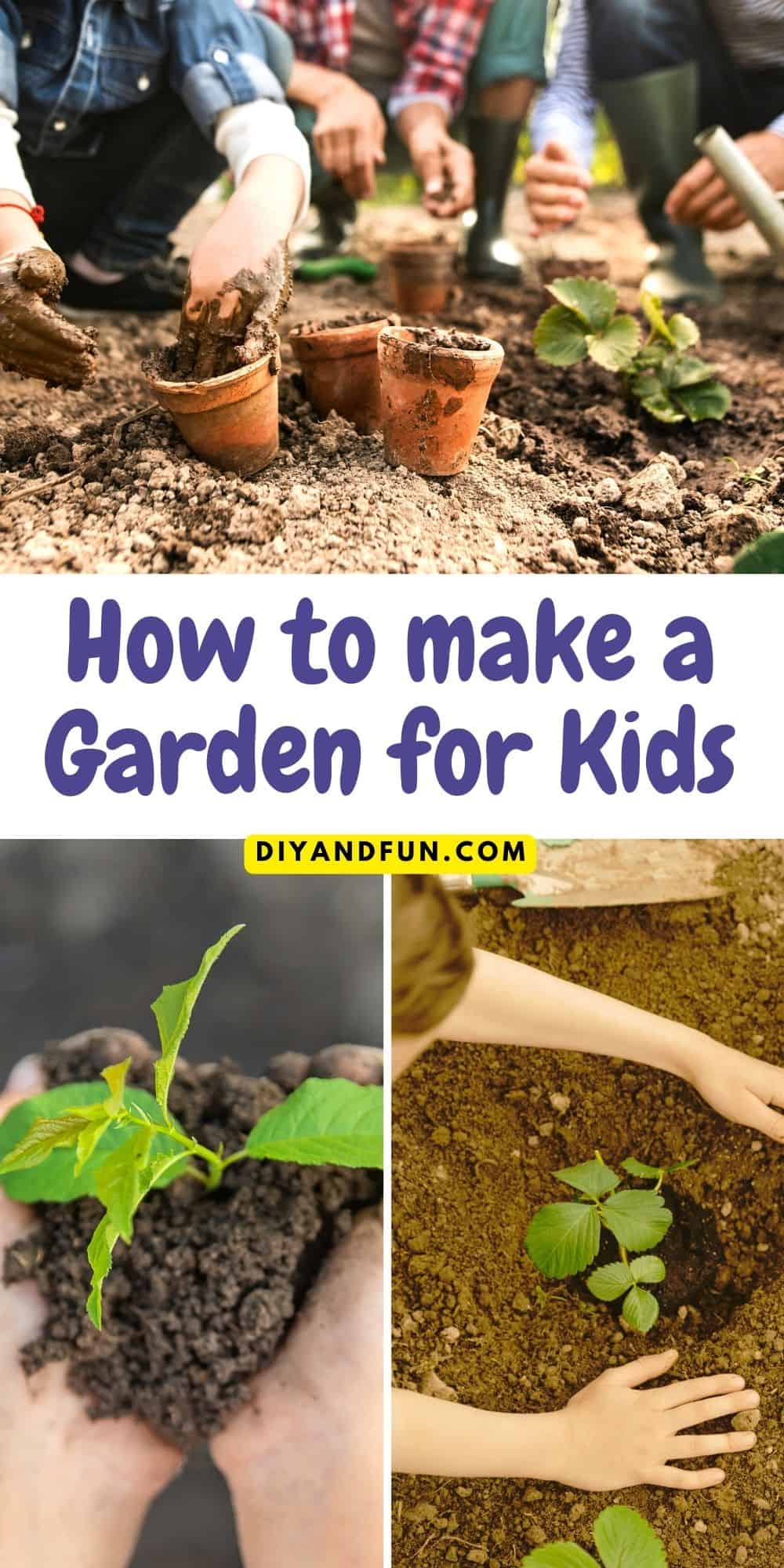
Thanks so much for visiting!
If you decide to try any of the ideas listed in this article please tag on social media @diyandfun. We like to hear your ideas and suggestions.
DIY and Fun is a website dedicated to providing you with the best DIY projects, crafts, recipes, hiking, and fun ideas that inspire. Whether you're looking for a new way to decorate your home, learn a new skill, or simply have some fun, DIY and Fun has something for everyone.
Here are some additional ways to keep coming back to DIY and Fun:
- Sign up for our email newsletter. We'll send you weekly updates with new projects, inspiration, and more.
- Follow us on social media. We're on Facebook, Twitter, and Pinterest.
- Our community forum is coming soon. Share your projects, ask questions, and get inspired by other DIYers.



